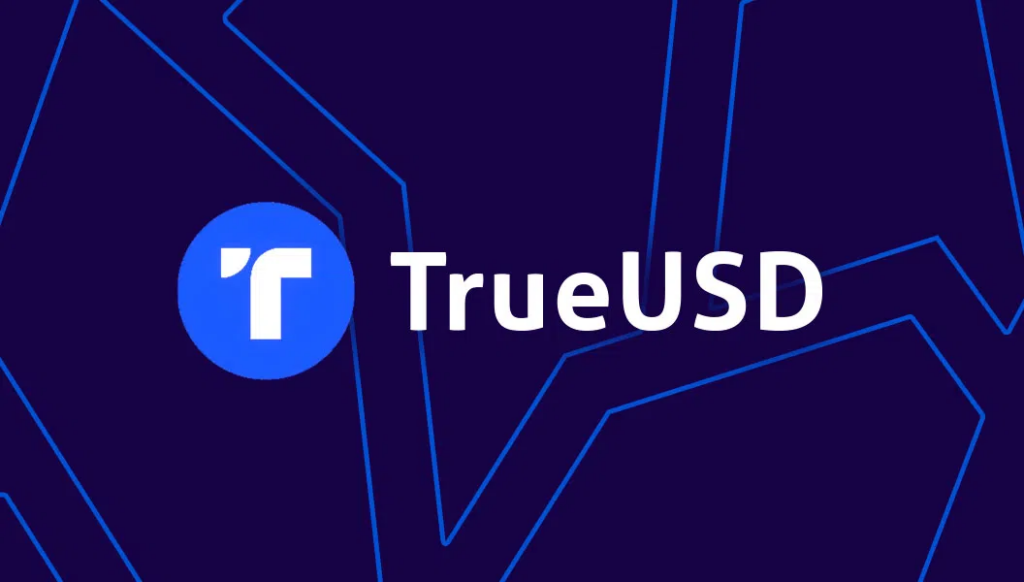TrueUSD (TUSD) is a prominent stablecoin in the cryptocurrency ecosystem, designed to maintain a stable value by being pegged 1:1 to the U.S. dollar. Issued by TrustToken (now under Techteryx), TUSD combines the benefits of blockchain technology—speed, security, and global reach—with the stability of fiat currency. This article explores how TUSD functions as a USD-backed stablecoin, its applications in cryptocurrency trading, decentralized finance (DeFi), and cross-border transfers, and the transparency mechanisms that set it apart. It also examines the role of third-party audits, TUSD’s benefits for hedging volatility, and its standing compared to competitors like Tether (USDT) and USD Coin (USDC), supported by key statistics, historical performance, and expert insights.
How TrueUSD Works as a Stablecoin
TrueUSD operates as a fiat-collateralized stablecoin, meaning each TUSD token in circulation is backed by an equivalent U.S. dollar held in reserve. This 1:1 peg ensures that TUSD maintains a value close to $1, making it a reliable alternative to volatile cryptocurrencies like Bitcoin or Ethereum.
- Issuance and Redemption:
TUSD is minted when users deposit USD into escrow accounts managed by third-party financial institutions partnered with TrustToken (now Techteryx). After Know Your Customer (KYC) and Anti-Money Laundering (AML) verification, the deposited USD triggers a smart contract to issue an equivalent amount of TUSD, typically as an ERC-20 token on Ethereum or as a BEP-20 token on Binance Smart Chain (BSC). To redeem, users send TUSD to a designated burn address, and the corresponding USD is wired to their bank account, usually within one business day. Techteryx charges no fees for minting or redemption, generating revenue from interest on USD reserves instead. - Multi-Chain Availability:
Initially launched on Ethereum in March 2018, TUSD has expanded to over a dozen blockchains, including BSC, Tron, Avalanche, Polygon, and Fantom. This interoperability enhances its accessibility and reduces transaction costs on networks with lower fees than Ethereum. - Peg Maintenance:
The 1:1 peg is upheld through transparency and arbitrage. Daily reserve attestations ensure the USD backing matches the circulating supply, while traders exploit any price deviations (e.g., TUSD trading at $0.99 or $1.01) to buy low and redeem high, stabilizing its value.
As of March 2025, TUSD’s circulating supply is approximately 495 million tokens, with reserves fully collateralized, maintaining its peg with minor fluctuations (typically ±0.5%).
Use Cases: Trading, DeFi, and Cross-Border Transfers
TUSD’s stability and liquidity make it a versatile tool across the crypto ecosystem.
- Cryptocurrency Trading:
TUSD serves as a key trading pair on exchanges like Binance, BitMart, and Huobi, allowing traders to move between volatile assets (e.g., BTC, ETH) and a stable store of value without converting to fiat. Its high liquidity—often exceeding $50 million in daily volume—ensures minimal slippage, making it ideal for arbitrage and market-making. In 2023, TUSD’s trading volume surpassed $1 billion daily during peak periods, reflecting its role in facilitating market entry and exit. - Decentralized Finance (DeFi):
In DeFi, TUSD is widely used for lending, borrowing, and liquidity provision. On platforms like Curve Finance and PancakeSwap, TUSD pairs (e.g., TUSD/USDT) boast millions in daily volume and liquidity, enabling users to earn yields or swap assets efficiently. Its multi-chain presence enhances its utility in DeFi ecosystems, with over $5 million in TVL tied to TUSD pools on BSC alone as of late 2024. Users also stake TUSD on centralized platforms to hedge volatility while earning passive income. - Cross-Border Transfers:
TUSD offers a fast, low-cost alternative to traditional cross-border payments. Transactions settle in minutes on blockchains like Tron (with fees as low as $0.01), compared to days and higher fees via SWIFT. Its adoption by payment systems like IvendPay and Travala—for retail POS and travel bookings—demonstrates its growing real-world utility, particularly in regions with limited banking access.
Transparency of the TrustToken Platform
Transparency is TUSD’s hallmark, distinguishing it from many stablecoins. Originally developed by TrustToken, a San Francisco-based company founded in 2017, TUSD’s operations shifted to Techteryx (British Virgin Islands) in December 2020, with ArchBlock managing day-to-day activities. The platform prioritizes openness through:
- Escrow Accounts:
USD reserves are held in multiple escrow accounts managed by trusted financial institutions, reducing counterparty risk. Techteryx itself has no direct access to these funds, enhancing security. - Real-Time Verification:
TUSD pioneered daily attestations of its reserves, starting with Armanino LLP in 2019. In 2022, it integrated Chainlink’s Proof of Reserve (PoR), enabling real-time, on-chain verification of USD backing. Users can check reserve data at tusd.io anytime, ensuring the 1:1 peg holds. - Smart Contract Security:
TUSD’s minting and redemption processes use audited smart contracts, reviewed by firms like CertiK and SlowMist, minimizing vulnerabilities. This transparency contrasts with historical opacity in other stablecoins.
Role of Third-Party Audits
Third-party audits are central to TUSD’s credibility:
- Daily Attestations:
Since 2018, TUSD has provided daily reports from firms like Armanino (later Moore Hong Kong and The Network Firm LLP), verifying that reserves match or exceed circulating supply. This contrasts with monthly or quarterly reports from peers. - Chainlink PoR:
Introduced in February 2023, Chainlink’s PoR automates reserve verification on-chain, making TUSD the first USD-backed stablecoin with this feature. This ensures minting aligns with USD deposits, reducing fraud risk. - Regulatory Compliance:
TUSD’s KYC/AML requirements and partnerships with FDIC-insured banks bolster its legal standing, earning it statutory recognition as a digital currency in Dominica in October 2022.
These measures have built trust, though some critics note that attestations (not full audits) lack the depth of a comprehensive financial review.
Benefits of TUSD for Hedging Volatility
TUSD’s stability makes it a prime tool for hedging crypto market volatility:
- Safe Haven:
During downturns—like the 2022 bear market—traders convert volatile assets to TUSD to preserve value without exiting to fiat, avoiding bank delays and fees. - Cost-Effective:
With no minting/redemption fees and low blockchain transaction costs, TUSD is cheaper than alternatives like USDT in high-fee environments (e.g., Ethereum gas spikes). - Liquidity:
Available on over 80 exchanges and DeFi protocols, TUSD offers easy access to liquidity pools, enabling rapid shifts between risk-on and risk-off positions.
For example, in March 2023, when USDC briefly depegged to $0.87 amid Silicon Valley Bank concerns, TUSD held steady at $1, gaining inflows as a reliable hedge.
Key Statistics and Historical Performance
- Market Cap: $495 million (March 2025), ranking TUSD ~50th among cryptocurrencies.
- Circulating Supply: 495.5 million TUSD, uncapped and demand-driven.
- Daily Volume: $40–$60 million, peaking at $1 billion+ in Q3 2023.
- Price Stability: Consistently $0.995–$1.005 since 2018, with an all-time high of $1.36 (August 2018) and low of $0.92 (early volatility).
- Historical Trends:
- 2018: Launched at $1, grew to 300 million supply by year-end amid stablecoin demand.
- 2021: Market cap hit $1.4 billion as DeFi boomed, but trailed USDT/USDC.
- 2023: Supply shrank to 495 million after peaking at 3 billion, reflecting redemption trends and competition, though trading volume spiked post-BUSD regulatory issues.
- 2025: Stabilized at $495 million, with modest growth tied to Binance adoption.
Comparison with USDT and USDC
TUSD competes with Tether (USDT) and USD Coin (USDC), the stablecoin giants:
- Market Share:
USDT ($120 billion) and USDC ($55 billion) dwarf TUSD’s $495 million, reflecting broader adoption and liquidity. - Transparency:
TUSD’s daily attestations and Chainlink PoR outshine USDT’s historical opacity (e.g., 2021 CFTC fine) and rival USDC’s monthly attestations by Grant Thornton. - Backing:
All three are 1:1 USD-backed, but USDT includes diverse assets (e.g., Treasuries, Bitcoin), while TUSD and USDC stick to cash and cash equivalents, with TUSD’s escrow model adding legal protection. - Regulation:
USDC’s U.S.-based Circle aligns with strict regulations, TUSD balances compliance with offshore flexibility, and USDT’s Hong Kong base has drawn scrutiny. - Use Cases:
USDT dominates trading volume, USDC leads institutional DeFi, and TUSD excels in transparency-focused niches.
TUSD’s smaller size limits its liquidity, but its transparency appeals to risk-averse users.
Expert Insights and Future Outlook
Experts see TUSD as a niche but credible player. Rafael Cosman, TrustToken co-founder, has emphasized its role as “a bridge between traditional finance and blockchain,” predicting growth in cross-border and DeFi use. Analyst Willy Woo notes TUSD’s “trust advantage” over USDT, though its market share lags. Posts on X highlight its Chainlink integration as a game-changer for transparency.
TUSD’s future depends on expanding adoption—e.g., Binance’s 2023 pivot to TUSD after BUSD’s regulatory woes boosted its profile. However, competition from USDT’s dominance and USDC’s institutional backing poses challenges. If TUSD leverages its transparency and multi-chain strategy, it could carve a larger niche by 2027.


